Delta Airlines 2003 Annual Report Download - page 39
Download and view the complete annual report
Please find page 39 of the 2003 Delta Airlines annual report below. You can navigate through the pages in the report by either clicking on the pages listed below, or by using the keyword search tool below to find specific information within the annual report.-
 1
1 -
 2
2 -
 3
3 -
 4
4 -
 5
5 -
 6
6 -
 7
7 -
 8
8 -
 9
9 -
 10
10 -
 11
11 -
 12
12 -
 13
13 -
 14
14 -
 15
15 -
 16
16 -
 17
17 -
 18
18 -
 19
19 -
 20
20 -
 21
21 -
 22
22 -
 23
23 -
 24
24 -
 25
25 -
 26
26 -
 27
27 -
 28
28 -
 29
29 -
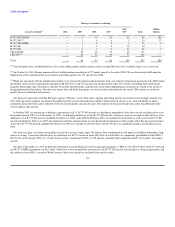 30
30 -
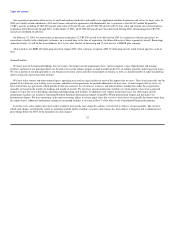 31
31 -
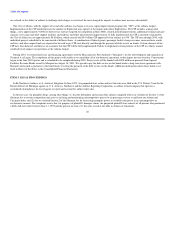 32
32 -
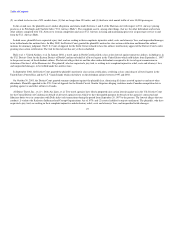 33
33 -
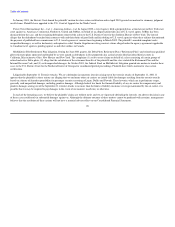 34
34 -
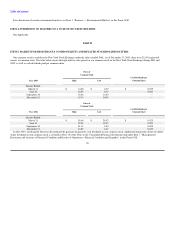 35
35 -
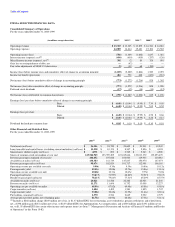 36
36 -
 37
37 -
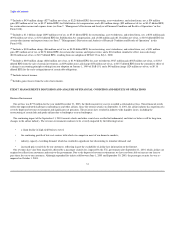 38
38 -
 39
39 -
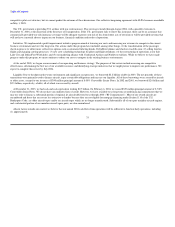 40
40 -
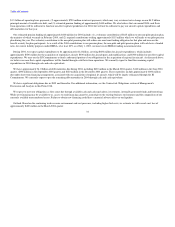 41
41 -
 42
42 -
 43
43 -
 44
44 -
 45
45 -
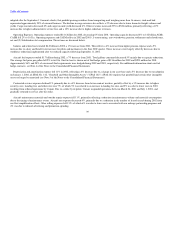 46
46 -
 47
47 -
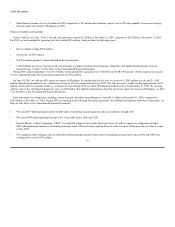 48
48 -
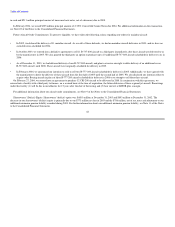 49
49 -
 50
50 -
 51
51 -
 52
52 -
 53
53 -
 54
54 -
 55
55 -
 56
56 -
 57
57 -
 58
58 -
 59
59 -
 60
60 -
 61
61 -
 62
62 -
 63
63 -
 64
64 -
 65
65 -
 66
66 -
 67
67 -
 68
68 -
 69
69 -
 70
70 -
 71
71 -
 72
72 -
 73
73 -
 74
74 -
 75
75 -
 76
76 -
 77
77 -
 78
78 -
 79
79 -
 80
80 -
 81
81 -
 82
82 -
 83
83 -
 84
84 -
 85
85 -
 86
86 -
 87
87 -
 88
88 -
 89
89 -
 90
90 -
 91
91 -
 92
92 -
 93
93 -
 94
94 -
 95
95 -
 96
96 -
 97
97 -
 98
98 -
 99
99 -
 100
100 -
 101
101 -
 102
102 -
 103
103 -
 104
104 -
 105
105 -
 106
106 -
 107
107 -
 108
108 -
 109
109 -
 110
110 -
 111
111 -
 112
112 -
 113
113 -
 114
114 -
 115
115 -
 116
116 -
 117
117 -
 118
118 -
 119
119 -
 120
120 -
 121
121 -
 122
122 -
 123
123 -
 124
124 -
 125
125 -
 126
126 -
 127
127 -
 128
128 -
 129
129 -
 130
130 -
 131
131 -
 132
132 -
 133
133 -
 134
134 -
 135
135 -
 136
136 -
 137
137 -
 138
138 -
 139
139 -
 140
140 -
 141
141 -
 142
142 -
 143
143 -
 144
144 -
 145
145 -
 146
146 -
 147
147 -
 148
148 -
 149
149 -
 150
150 -
 151
151 -
 152
152 -
 153
153 -
 154
154 -
 155
155 -
 156
156 -
 157
157 -
 158
158 -
 159
159 -
 160
160 -
 161
161 -
 162
162 -
 163
163 -
 164
164 -
 165
165 -
 166
166 -
 167
167 -
 168
168 -
 169
169 -
 170
170 -
 171
171 -
 172
172 -
 173
173 -
 174
174 -
 175
175 -
 176
176 -
 177
177 -
 178
178 -
 179
179 -
 180
180 -
 181
181 -
 182
182 -
 183
183 -
 184
184 -
 185
185 -
 186
186 -
 187
187 -
 188
188 -
 189
189 -
 190
190 -
 191
191 -
 192
192 -
 193
193 -
 194
194 -
 195
195 -
 196
196 -
 197
197 -
 198
198 -
 199
199 -
 200
200 -
 201
201 -
 202
202 -
 203
203 -
 204
204 -
 205
205 -
 206
206 -
 207
207 -
 208
208 -
 209
209 -
 210
210 -
 211
211 -
 212
212 -
 213
213 -
 214
214 -
 215
215 -
 216
216 -
 217
217 -
 218
218 -
 219
219 -
 220
220 -
 221
221 -
 222
222 -
 223
223 -
 224
224 -
 225
225 -
 226
226 -
 227
227 -
 228
228 -
 229
229 -
 230
230 -
 231
231 -
 232
232 -
 233
233 -
 234
234 -
 235
235 -
 236
236 -
 237
237 -
 238
238 -
 239
239 -
 240
240 -
 241
241 -
 242
242 -
 243
243 -
 244
244 -
 245
245 -
 246
246 -
 247
247 -
 248
248 -
 249
249 -
 250
250 -
 251
251 -
 252
252 -
 253
253 -
 254
254 -
 255
255 -
 256
256 -
 257
257 -
 258
258 -
 259
259 -
 260
260 -
 261
261 -
 262
262 -
 263
263 -
 264
264 -
 265
265 -
 266
266 -
 267
267 -
 268
268 -
 269
269 -
 270
270 -
 271
271 -
 272
272 -
 273
273 -
 274
274 -
 275
275 -
 276
276 -
 277
277 -
 278
278 -
 279
279 -
 280
280 -
 281
281 -
 282
282 -
 283
283 -
 284
284 -
 285
285 -
 286
286 -
 287
287 -
 288
288 -
 289
289 -
 290
290 -
 291
291 -
 292
292 -
 293
293 -
 294
294 -
 295
295 -
 296
296 -
 297
297 -
 298
298 -
 299
299 -
 300
300 -
 301
301 -
 302
302 -
 303
303 -
 304
304
 |
 |

Table of Contents
Due to the changes that have occurred in the airline industry, we must significantly reduce our costs in order to be competitive in the current environment
and over the long-term. Our cost structure is materially higher than that of the low-cost airlines with which we compete. Moreover, as mentioned above, other
hub and spoke airlines, such as American Airlines, United Airlines and US Airways, have significantly reduced their costs through bankruptcy or the threat of
bankruptcy. Our unit costs have gone from being among the lowest of the hub and spoke airlines to among the highest for 2003, a result which places us at a
serious competitive disadvantage.
Revenues. Our operating revenues were $13.3 billion in 2003, which was unchanged from our operating revenues in 2002 and 4% lower than our operating
revenues in 2001. Our operating revenue performance in 2003 reflects the depressed revenue environment discussed above. During 2003, our and other
airlines' revenues were also negatively impacted by the military action in Iraq.
International traffic, particularly in our Atlantic region, experienced the greatest impact related to the situation in Iraq, declining 12% for 2003 as compared
to the prior year. Year-over-year increases in our military charter revenues in 2003 partially offset the negative effect of these events.
In April 2003, we implemented a 12% reduction in mainline capacity due to the military action in Iraq. Because there has been some improvement in
passenger demand since the end of major military combat in Iraq in May 2003, we have now restored most of this capacity.
Costs. Our cost pressures for 2003 compared to 2002 included increases in pension, aircraft fuel and interest expense. Pension and related expense
increased approximately $290 million, primarily due to declining interest rates, a decrease in the fair value of our pension plan assets and scheduled pilot
salary increases under the pilots' collective bargaining agreement. Aircraft fuel expense rose $255 million, mainly due to the rise in fuel prices to historically
high levels in the period leading up to the military action in Iraq and again during the December 2003 quarter. Our interest expense increased $86 million,
largely due to higher levels of debt outstanding based on our substantial increase in borrowings as discussed below.
We expect these cost pressures to continue during 2004. We estimate that the total annual increase for 2004 compared to 2003 related to aircraft fuel,
pension and related, and interest expense will be approximately $180 million, $130 million and $75 million, respectively. Our estimated increase in aircraft
fuel expense assumes an average fuel price per gallon in 2004 of approximately 84¢, a 3% increase over 2003, on our projected aircraft fuel consumption of
approximately 2.5 billion gallons.
Salaries and related costs represented 45% and 42% of our total operating expenses for 2003 and 2002, respectively. We have taken actions, such as
workforce reductions and changes in our non-pilot employee benefits, to reduce employee-related costs. Our pilot cost structure is, however, significantly
higher than our competitors. It is critical to reduce our costs in order to be competitive with other airlines. We are currently in discussions with ALPA, to
move toward a
32
